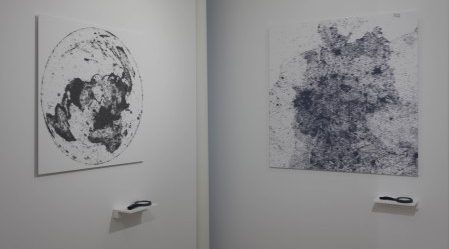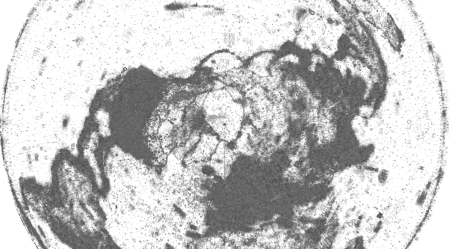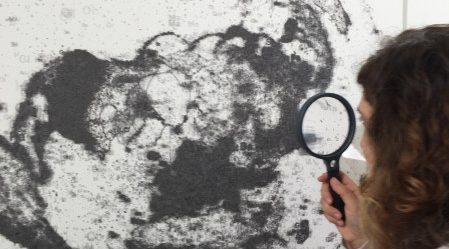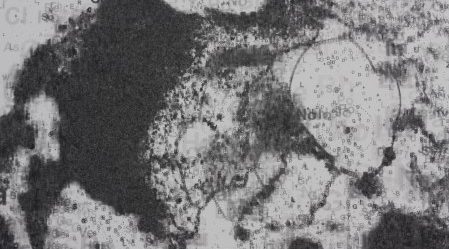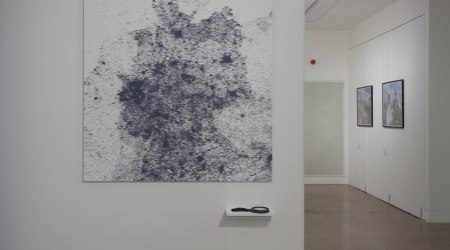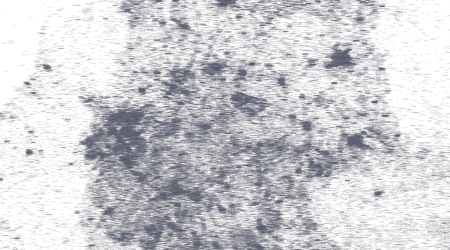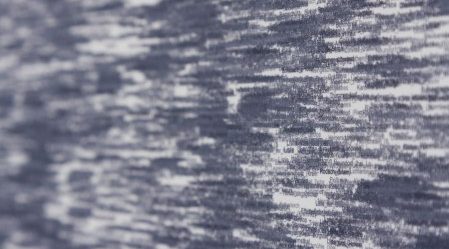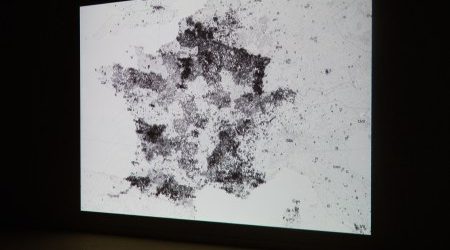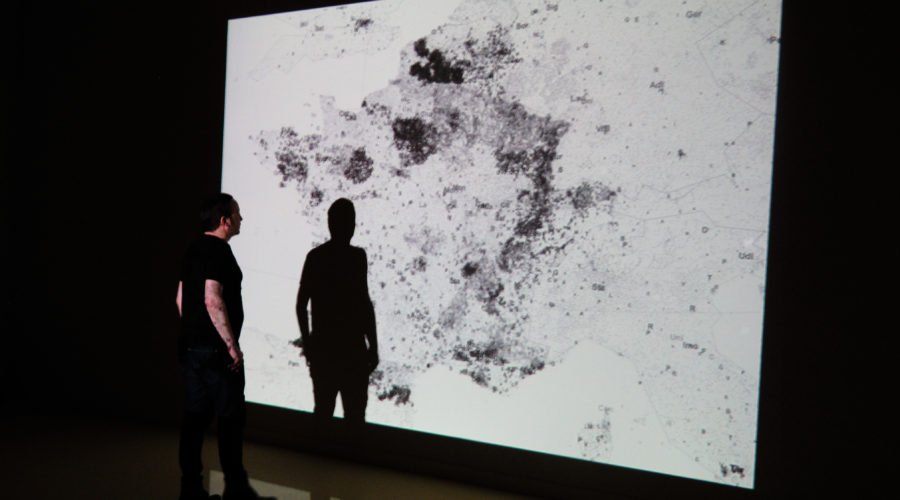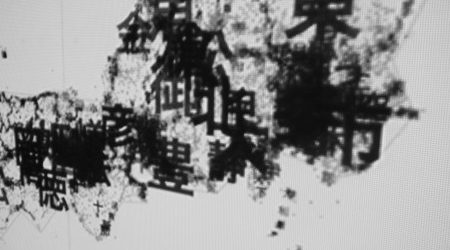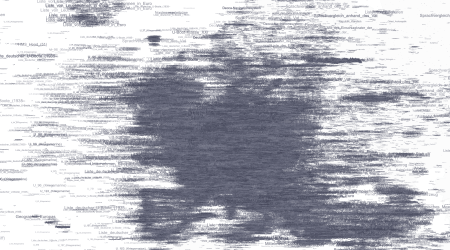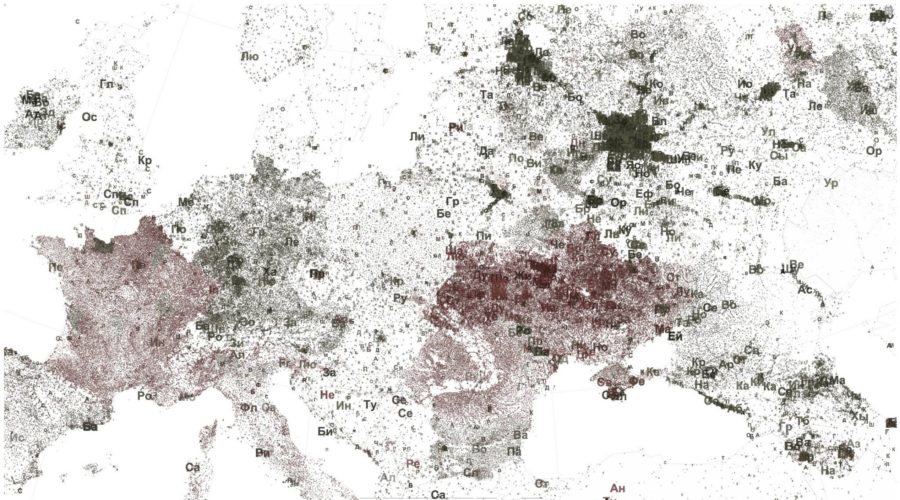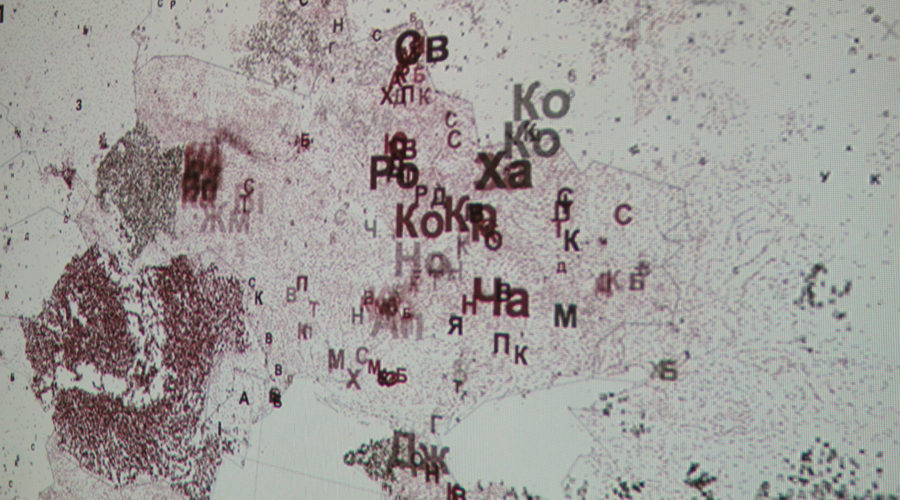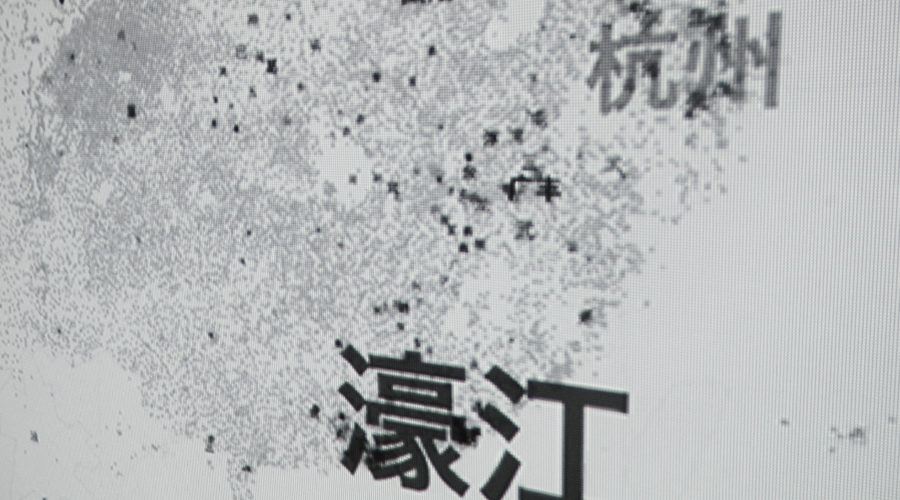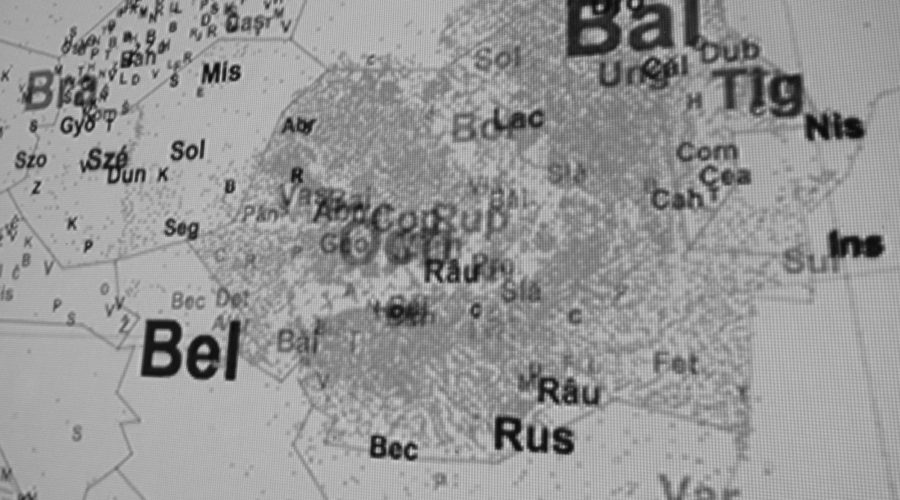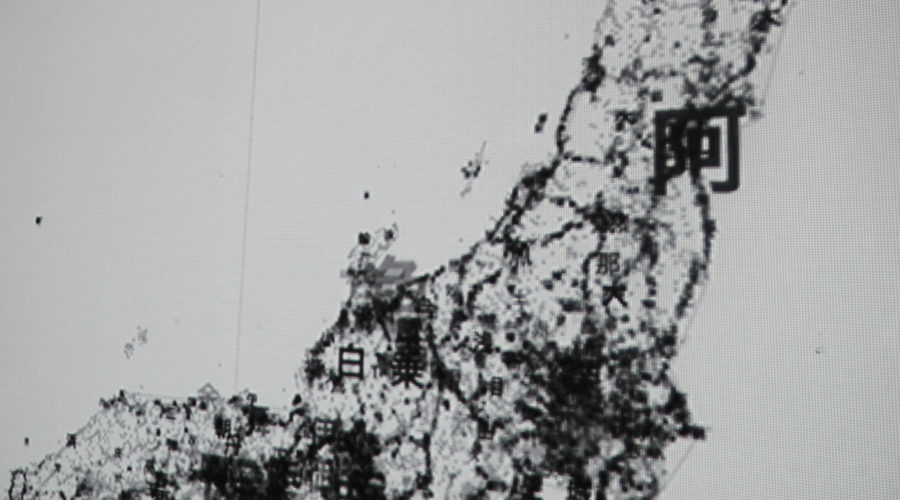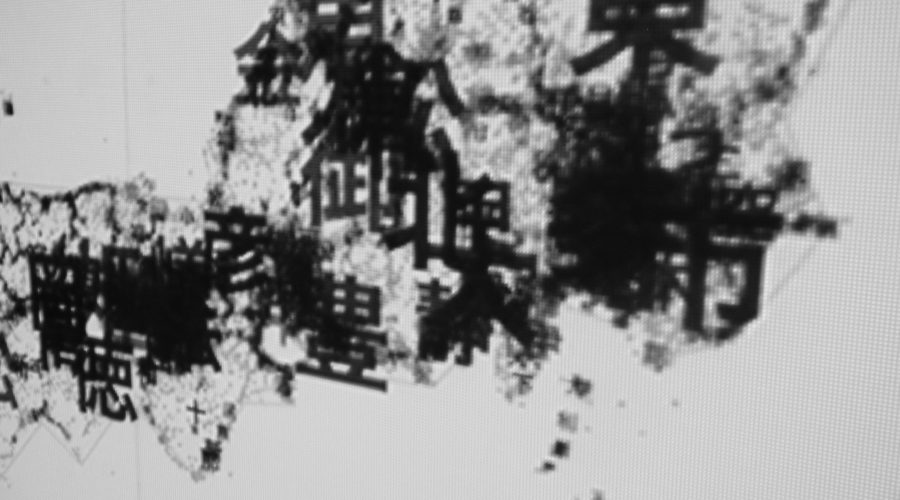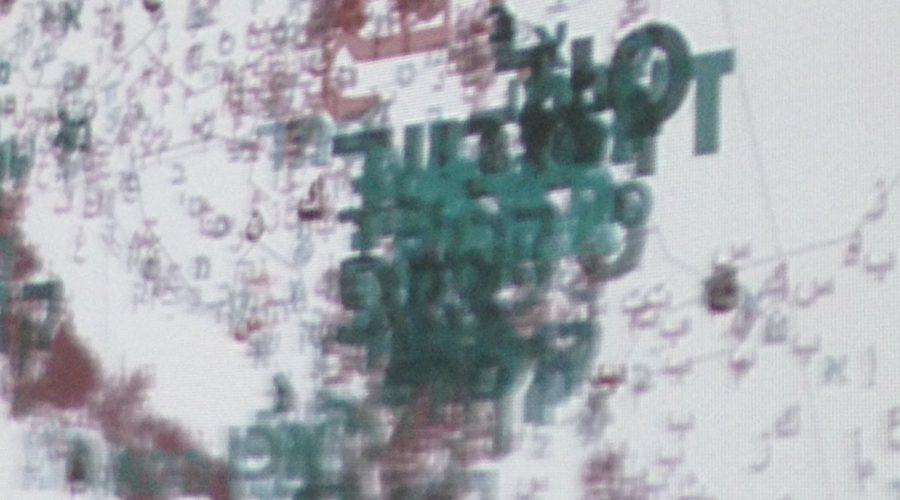CODEX is a multi-part project consisting of a number of animations displayed in installation format, and large-scale inkjet prints derived from a geographic mapping of Wikipedia’s language editions. More details of the work can be found on the project blog http://digital-realism.net/.
As noted by Peg Rawes the project follows in a history of artistic and philosophical interventions into cartography, such as Agnes Denes’ map projections, which relocate scientific and technological knowledge toward an aesthetic reimagining of humanity’s relationship to the earth, or Buckminster Fuller’s Dymaxion maps which develop a similar ecological argument through speculative geologies (2016). Working from this critical and aesthetic tradition, but with a contemporary focus on data and algorithmic sorting, CODEX explores how a given socially constructed dataset (in this case Wikipedia) demonstrates how the dispersal of online knowledge (and thus power in a Foucauldian analysis) reflects imbalances in political and geographic power in the real world. In the project, article titles derived from this data are used to produce textual glyphs and phonemes that hint at the underlying content and structure of the data employed in the work. The effect of this is a differential texturing across the map, where major articles appear as large-scale labels and less developed but more abundant articles form topographies of varying density and in some cases phlegm like viscosity. In the prints this shows as layered, scabrous and inked surfaces that have a three-dimensional quality which could be considered as geological forms. The temporal development of article distribution on Wikipedia can be gleaned by looking at the creation dates of the articles. Animations of this editing activity shows how each language community has developed and grown at different times, and how it describes geographic space.
If Buckminster Fuller or Agnes Denes’ work hints at the ‘utopian’ or redemptive power of reason and a human capacity to progress to a saner more ecologically and socially equitable future, the mappings revealed in CODEX present a less certain vision. In an era of ‘fake news’ the work’s deformations draw attention to how excessive flows of capital, technology, and material are reshaping geography, space and time, thereby inviting us to contemplate our role in a world in upheaval. Tom Corby/Gavin Baily.
Media/date of production 2014-16
10 x large scale data animations/installations (varying duration);
2 x Large scale data prints (1x 914 mm x 914 mm, 1 x 1220 x 1220 mm Inkjet on board);
Acknowledgements
CODEX was funded by the UK Arts and Humanities Research Council as part of the Digital Realism project which was produced in collaboration with Dr Stefano de Sabbata of the Oxford Internet Institute.
Referenced in:
Rawes P, (2015), ”Architectural Ecologies & Ratios,” Bartlett International Lecture Series 2015/16, Bartlett School of Architecture, University College London, on vimeo.

